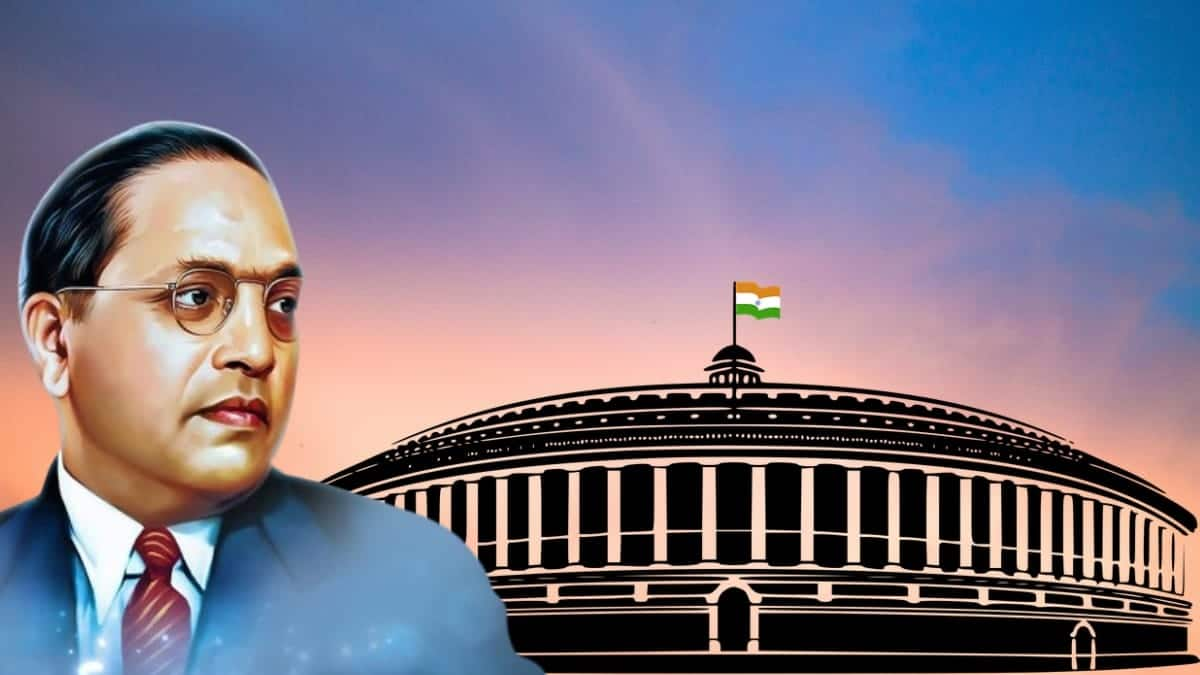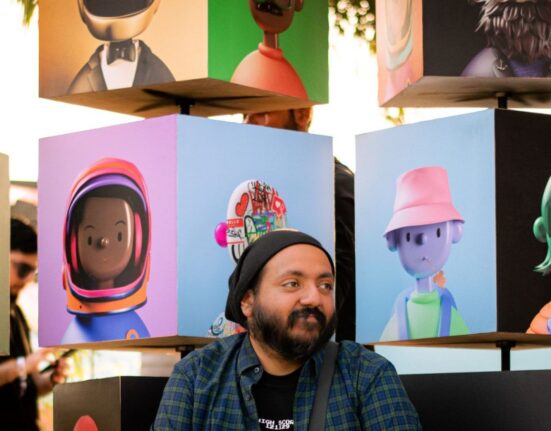By Vaibhav Agrawal
In a land steeped in history, where ancient traditions mingle harmoniously with the modern world, India
Unlike some nations where Parliament wields ultimate power, India’s Constitution holds sway with an iron grip of its own, asserting its supremacy and integrity. It was not crafted in haste or handed down from a higher authority; instead, it was meticulously sculpted by a Constituent Assembly, born from the will of the people themselves. In its very preamble, the Constitution declares its allegiance to the citizens of the nation, a declaration that Parliament can never overrule.
Much like the eternal city of Rome, India’s constitutional marvel was not constructed overnight. It was a labour of love, an odyssey of ideas, and an embodiment of the hopes and dreams of a burgeoning nation. It took a staggering two years, 11 months, and 18 days of ceaseless deliberation, debate, and determination to carve out the longest written national constitution in the world.
The Constituent Assembly, with Dr B.R. Ambedkar, as its guiding light, embarked on this herculean task. Their relentless pursuit of a democratic and just society culminated in the passing of the Constitution on November 26, 1949. That fateful day marked the birth of a document that would become the soul of a diverse nation, a guidepost for justice, and a protector of individual rights.
Where is the original copy of our Constitution and what does it look like?
The original copies, meticulously scribed in both Hindi and English, find their sanctuary in a helium-filled case located within the hallowed halls of the parliamentary library. But it wasn’t always this way. In its early days, the Constitution was a fragile work, swathed in flannel cloth and surrounded by naphthalene balls, a humble beginning for what would become the cornerstone of India’s democracy.
In a move inspired by the United States, which diligently protects its own revered Constitution, India took a monumental step in 1994. The decision was made to place the original Constitution in a specially constructed gas chamber within the Parliament House’s library.
To ensure the Constitution’s longevity, India forged an agreement with the prestigious Getty Institute of America, known for its expertise in preserving cultural treasures. This partnership birthed a state-of-the-art gas chamber, a hermetically sealed environment meticulously designed to shield the document from the ravages of time.
The Indian Constitution, a masterpiece of artistry and thought, is entirely handwritten in black ink. This ink, while enduring, is prone to oxidation, necessitating precise environmental control. It thrives at a specific humidity level of around 50 grams per cubic metre. Thus, the airtight chamber was conceived, serving as the guardian of this priceless artefact.
Inside the chamber, a vigilant network of monitors diligently maintains humidity at a constant level. Once a year, the chamber is emptied of its gas to ensure continued effectiveness, a task executed with utmost precision. The chamber undergoes meticulous inspections every two months and is perpetually under the watchful eye of CCTV cameras, ensuring its perpetual safety.
The original Constitution, an opus of democracy, boasts a Preamble, 22 parts with 448 articles, 12 schedules, five appendices, and 115 amendments. It was meticulously penned by the skilled hand of Prem Behari Narain Raizada, a labour of love that stands as a testament to the dedication of its creators. The document itself is adorned by the artistic talents of Shantiniketan, infusing it with a unique vibrancy and cultural significance.
Beauty of the unknown
One of a thousand photolithographic reproductions of the Constitution of the Republic of India, meticulously replicated from the original, is housed in a special nitrogen-filled, hermetically sealed case, serving as a testament to the nation’s commitment to preserving its democratic legacy.
This remarkable reproduction is a work of art in itself. The pages of this magnificent document are adorned with illustrations that pay homage to various civilizational styles that have graced the Indian subcontinent over the centuries. From the prehistoric Mohenjodaro in the Indus Valley to the present, these illustrations offer a visual journey through India’s rich history.
The calligraphy that graces the pages of this reproduction is the work of the skilled hand of Prem Behari Narain Raizada. Using a holder and nib (No. 303 nib), Raizada breathed life
The illustrations, reflecting India’s diverse cultural tapestry, were created using indigenous techniques, with the shimmer of gold leaf and the vivid hues of stone colours. Each page of this reproduction is a masterpiece in its own right, bearing the signature of the calligrapher, Prem, at the bottom left of the text window, and the illustrator’s name at the bottom left of each illustrated page frame.
To ensure the document’s longevity, it was penned on microbe-resistant parchment sheets measuring 45.7 cm × 58.4 cm, designed to endure for a millennium. The finished manuscript, a substantial 234 pages in length, weighed a considerable ~13 kg, a testament to its monumental importance.
Bifurcation and the journey that followed
Their creative endeavours, both literal and metaphorical, unfurled an expansive canvas that spanned an astounding 5,000 years of Indian history. Through their artistic expressions, they celebrated the achievements of an ancient civilization. Regrettably, those who perceive their work with a narrow focus often fail to appreciate the intricate details within the grand tapestry.
During the arduous deliberations of the Constituent Assembly, tasked with the monumental responsibility of drafting the Constitution for this burgeoning nation, the then Prime Minister, Jawaharlal Nehru, entrusted Prem Behari Narain Raizada, a renowned calligraphist, with the laborious task of transcribing the entire Constitution by hand. Remarkably, Raizada did not seek any financial compensation for his painstaking efforts. Instead, he requested the privilege of signing each page of this historic document, a request that was graciously granted.
Simultaneously, the artistic brilliance of Nandalal Bose, the acclaimed artist hailing from Santiniketan, was summoned to grace the Constitution with his creative touch. Bose, alongside a team of students, including six talented women artists, embarked on the meticulous task of illustrating the Constitution. Some of the original pages of the Constitution proudly bear their signatures, signifying their artistic contributions. This labour of love took a remarkable five years to complete, not only enhancing the visual appeal of the Constitution but also imbuing its provisions with profound symbolic meaning.
The Constitution, divided into 22 parts, is adorned with intricate line drawings, each drawing inspiration from various artistic traditions. The horizontal format of these illustrations draws from the ancient palm leaf miniatures of Bengal and South India, while the concept of ornate borders on each page is reminiscent of Mughal miniatures. Nandalal Bose’s training in Japanese and Southeast Asian art is evident in the art’s composition, reflecting a fusion of diverse traditions. Additionally, influences are drawn from the art of Ajanta and Bagh Caves, Chola art, the Oriya school of sculpture, Deccani miniatures, and the poster art of the 19th and 20th centuries. In essence, the Constitution itself becomes a testament to India’s artistic diversity, eloquently speaking in the languages of various art styles and traditions.
The depiction of India’s historical panorama in the Constitution serves a dual purpose, reflecting the nation’s aspiration for legitimacy and emphasising a foundational aspect of Indian civilization: assimilation.
Firstly, many young nations seek to derive legitimacy from their historical heritage, whether actual or borrowed. India, blessed with a rich and diverse history, can naturally draw inspiration from its past to build a sense of national identity. In contrast, young nations like the United States had to rely on a borrowed past from the Classical World to establish their legitimacy.
Secondly, the illustrations in the Constitution not only showcase India’s historical achievements but also highlight a fundamental pillar of Indian civilization: assimilation. India has been known for its remarkable ability to embrace and integrate various communities, thoughts, schools of philosophy, and lifestyles into its national fabric. This unique quality is juxtaposed with the historical tendency of Western civilizations to subjugate and even annihilate the people and communities they encountered as they expanded. This assimilative nature has contributed to India’s progress over the millennia.
The author is an independent journalist with focus on Space and Defence Affairs and a writer for The Legit, a Multimedia platform for legal awareness.
Disclaimer: Views expressed are personal and do not reflect the official position or policy of Financial Express Online. Reproducing this content without permission is prohibited.







